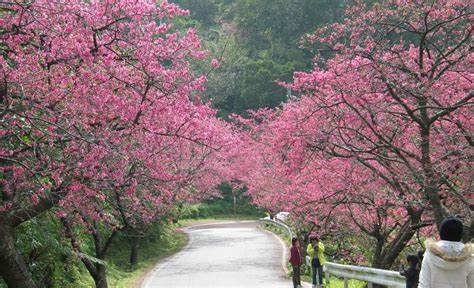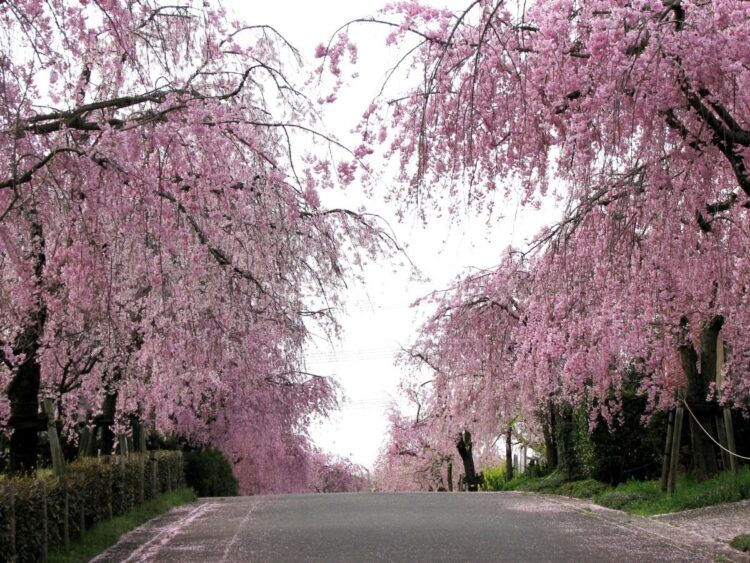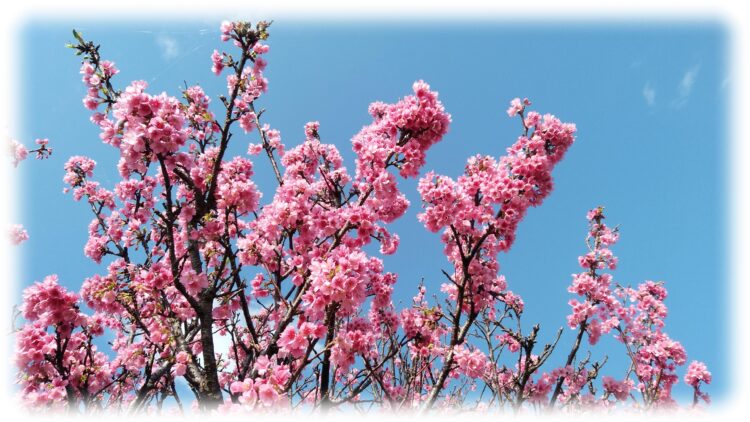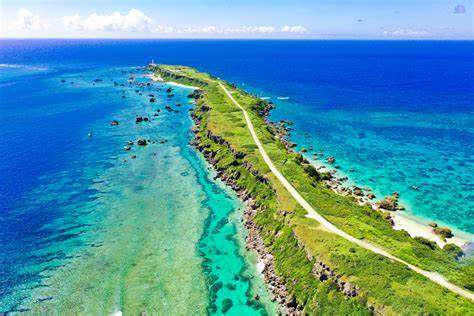2025.03.30 - News
2025 Okinawa Late Cherry Blossom Season Exclusive Guide: A Guide to Cherry Blossom Viewing in April-May
When the cherry blossoms of Honshu turn into spring soil, Okinawa’s subtropical sea breeze carries a blend of saltiness and floral fragrance, quietly heralding an off-peak cherry blossom spectacle. Influenced by the persistent Kuroshio Current, the northern mountainous regions and outlying islands of Okinawa have developed unique microclimates, delaying the blooming period of late-season cherry varieties by approximately 45 days compared to Honshu. According to 2025 observational data, cherry blossoms at places like Yae-dake Highlands and Kume Island will begin blooming sequentially from April 15th, lasting until around May 10th. Here, there are no crowds of cherry blossom viewers jostling for space. Instead, you’ll find blossoms dancing alongside coral reefs on cliffs, century-old trees emerging ethereally in the morning mist, and ancient legends whispered beneath night blossoms accompanied by the melodies of the sanshin. For travelers seeking deeper experiences, this may be another secret key to unlocking Okinawa.
Three Major Late-Blooming Cherry Varieties & Their Features
1. Yae-dake Highland Cherry
– Blooming period: Late April to early May
– Characteristics: Pale pink petals interwoven with fresh green leaves, creating a “cherry snowstorm” effect.
– Scientific discovery: 2024 genetic testing confirmed it as an Okinawan endemic subspecies with exceptional wind resistance.

2. Kume Island Shidare-zakura (Weeping Cherry)
– History: Introduced during the Edo period by the Ryukyu Kingdom, 38 century-old trees remain, their cascading branches resembling pink waterfalls.
– Viewing tip: During the “golden hour” (17:30-18:30), the shadows of the weeping branches can stretch up to 10 meters.

3. Ishigaki Island Ryukyu Higan-zakura
– Ecology: Highly salt-tolerant, growing as close as 50 meters from the coast, forming unique compositions with traditional red-tiled houses.

Five Top Viewing Spots
1. Hedo Misaki Sakura-no-Oka (Kunigami Village)
– Highlights:
– Southernmost cherry blossom viewing point in Japan (26°47’N), where blossoms contrast dramatically with 80-meter cliffs and azure seas.
– Natural wonder: Late April to early May brings a rare “pink-to-green gradient” as cherry blossoms mingle with new leaves.
– Hidden gem: The cliffside open-air café Misaki-no-Chaya offers limited-edition cherry blossom tea sets with panoramic East China Sea views.
– Practical info:
– Blooming period: April 20-May 5
– Transport: ~2.5-hour drive from Naha; detour to Kouri Island recommended.
2. Yae-dake Unkai Sakura Belt (Motobu Town)
– Highlights:
– A 4-km “cherry blossom tunnel” with 7,000 trees, shrouded in morning mist—ideal for driving or hiking.
– Photography hotspot: The summit observatory captures blossoms, ocean, and townscapes; telephoto lenses recommended for misty flows.
– Scientific note: The trees’ roots break down volcanic rock for minerals, a trait now studied for coastal erosion prevention.
– Practical info:
– Blooming period: April 25-May 5
– Transport: ~2-hour chartered ride from Naha; avoid weekend mornings.
3. Kume Island Tenjin Mountain (Kumejima Town)
– Highlights:
– A hidden grove of 38 century-old weeping cherries (branches up to 4.2m long), paired with turquoise waters and white sand.
– Ecological synergy: Snorkel at Tindabana Coral Reef (150m offshore) to see blossom reflections amid tropical fish.
– Cultural touch: Edo-era Ryukyu coins are buried beneath the trees; some sites allow tactile exploration.
– Practical info:
– Blooming period: April 25-May 8
– Transport: ~3-hour ferry from Naha; e-bike rentals recommended for island tours.
4. Yanbaru Area, Onna Village (Okinawa Main Island)
– Highlights:
– An ecological reserve where cherries coexist with endangered Yanbaru kuina birds; daily cap of 100 visitors (book online).
– Hands-on science: Weekly “Pollination Lab” sessions let visitors collect pollen and analyze DNA.
– Practical info:
– Blooming period: April 15-May 5
– Transport: ~1.5-hour drive from Naha; 4WD advised for narrow mountain roads.
5. Higashi-Hennazaki, Miyako Island
– Highlights:
– Surreal frames of blossoms with 20,000-year-old “mushroom rocks” coral formations; wade out at low tide for dreamy shots.
– Geo-educational tours: Weekly Friday walks led by geologists explain cherry-coral symbiosis.
– Practical info:
– Blooming period: April 28-May 3 (only 6 days)
– Transport: ~50-minute flight from Naha; rent non-slip reef shoes (¥800 onsite).

Limited-Time Events & Tips
– Apr 26-27: Hedo Misaki “Blossoms & Whale Songs” Concert (humpback whale vocalizations transformed into music).
– May 3-5: Miyako Island “Cherry Blossoms × Blue Tears” Tour (experts explain bioluminescent plankton links).
Transportation
1. Train (Yui-Rail Monorail)
– Coverage: Naha city center
– Pros: 99% punctuality; unlimited rides with 1-day pass (¥800).
– Cons: Limited to southern Okinawa; last train at 23:30.
2. Car Rental
– Requirements: International + domestic driver’s licenses.
– Note: English/Chinese GPS available; avoid night driving on northern mountain roads.
3. Chartered Cars
– Perks: Custom “blossoms + snorkeling” itineraries; drivers know hidden photo spots.
Notes
– Rainy season: Expect ~18 rainy days in April-May.
Beyond Cherry Blossoms
– Whale watching: Over 90% success rate for humpback sightings until late April.
Okinawa’s late cherry blossom season is a journey where nature and culture intertwine—from cliffside blooms to coral symbiosis, ancient trees to ecological research, redefining the poetry of hanami.
Itineraries are suggestions only. Kingtai Travel also offers private route planning and chartered services in Okinawa. Contact us for details—we look forward to welcoming you!